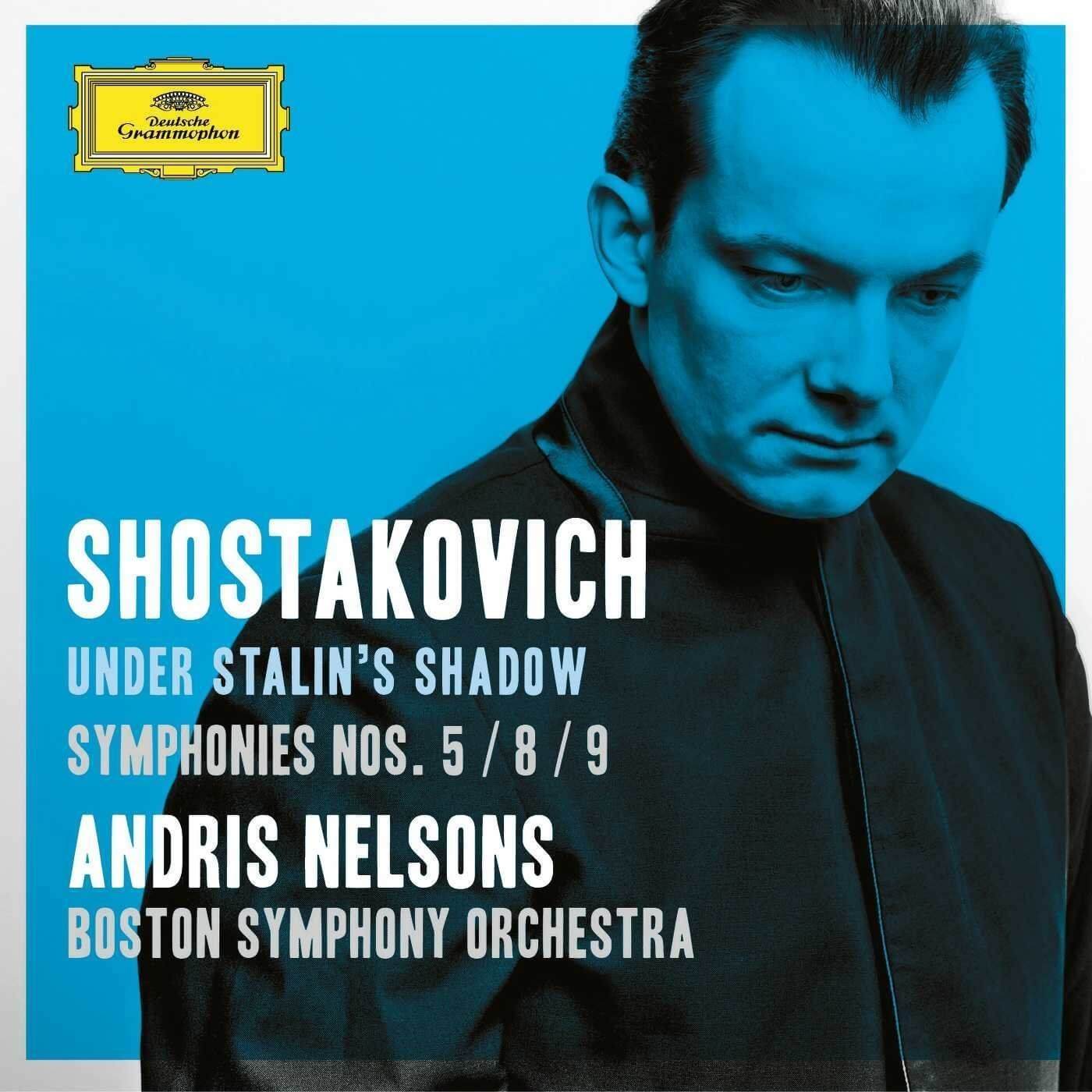
Shostakovich: Under Stalin’s Shadow. Symphonies Nos. 5/8/9. Suite from “Hamlet”. Boston Symphony Orchestra/Andris Nelsons. DG 479 5201. Total Time: 157.38 (2 CDs).
There was a time, long ago, when the Boston Symphony (BSO) was in the forefront of major American orchestras championing the music of Shostakovich, and vied with other leading orchestras for the honour of presenting Western premieres of the latest Shostakovich symphonies. Russian-born Serge Koussevitsky was the orchestra’s music director (1924-1949). Charles Munch, Koussevitsky’s successor (1949-1962), had little interest in Shostakovich. Later Erich Leinsdorf (1962-1969) seemed to prefer Prokofiev to Shostakovich, Seiji Ozawa, music director of the BSO from 1972 to 2002, had at least some Shostakovich in his repertoire, but his successor James Levine (2004-2011) had virtually no interest at all. Today we have Latvian-born Andris Nelsons, the current music director, and his first major project with the orchestra is to record all fifteen of the Shostakovich symphonies. On the basis of the first two releases — we had a magnificent Tenth Symphony last year to kick off the cycle – it is clear that the symphonies of Shostakovich have found their near-ideal interpreters.
These Nelsons/BSO performances were recorded live at Symphony Hall, Boston, and as I stated in my review of the recording of the Tenth Symphony, the acoustics of this great concert hall are a tremendous asset. Under Nelsons’ baton, the orchestra is also sounding better than it has in many years. Nelsons is a stickler for rhythmic precision, and the crispness of the playing reminds me of the Chicago Symphony under Solti. In addition, Nelsons cultivates a vast range of dynamics that keeps the music alive in every bar. And then, there is the quality of the playing. The principal players are extraordinary: oboist John Ferrillo, clarinettist William R. Hudgins, and timpanist Timothy Genis, to name just a few, rival their counterparts in any orchestra in the world. It should also be noted that two of the fine first chair players – concertmaster Malcolm Lowe and hornist James Somerville — are Canadian.
Years ago, when Russian orchestras first began to tour North America, listeners couldn’t help but be blown away by the power and ferocity of the low brass (trombones and tuba) playing. The Leningrad Philharmonic under Mravinsky and the USSR State Symphony, conducted by Svetlanov, were both unforgettable in this respect. But somehow, Andris Nelsons has conjured the same kind of low brass sound from the Boston Symphony for these Shostakovich performances; for example, listen to the third movement from the Eighth Symphony and the “Hunt” music from the “Hamlet” Suite.
Symphony No. 5, the most popular of the Shostakovich symphonies, has been recorded more often than any of the others. The versions by Bernstein and Rostropovich are justly famous, and the recent version by Vasily Petrenko was impressive, but this new recording by Nelsons and his Boston players is the equal of any of them. Nelsons has a sure sense of tempo and builds climaxes inexorably. His players give him committed and virtuosic playing. The quiet ending of the first movement is beautifully judged and simply magical.
Symphony No. 8, while a more difficult piece from an audience point of view, and minus the triumphant finish of the Fifth, is in many ways an extension of the compositional process of that earlier work. The opening of the first movement in both symphonies features a dialogue between upper and lower strings and continues with music of brooding intensity. In the case of the Eighth, the process moves very slowly indeed with brass and percussion appearing in full force only about 12 minutes into the movement. When they come, the climaxes in the Eighth are enormous, especially the repeated percussion crescendos in the first and last movements. Nelsons maintains the tension across the entire 66 minutes of the symphony.
Symphony No. 9, conceived on a much smaller scale than either the Fifth or the Eighth symphonies, and full of jaunty tunes and good humour, is really Shostakovich’s “Classical Symphony.” Shostakovich has a lot of fun suggesting that the trombone can only play two notes, which it does — over and over. Nelsons and his players clearly enjoy themselves in this performance and give it unusual polish and virtuosity.
The “Hamlet” music dates from 1932, early in the composer’s career, and was written for what Harlow Robinson calls “a zany avant-garde production.” Written for a large orchestra, the music is decidedly heavy-duty. In this recording, although we get only seven of the eleven pieces in the Suite Op. 32a – in total about fourteen minutes of music – it is music exceptionally well-played and well worth hearing.
In sum, this set is a winner on all counts and leaves the listener wanting more. Next to come will be an album containing the Sixth and Seventh symphonies.
I have only one small quibble. The designer of the booklet needs to reconsider putting track numbers and movement timings in white against a light blue background; in this colour format, they are almost unreadable.
#LUDWIGVAN
Want more updates on Toronto-centric classical music news and review before anyone else finds out? Get our exclusive newsletter here and follow us on Facebook for all the latest.
- SCRUTINY | TSO Lets Berlioz Do The Talking In Season Opener - September 21, 2018
- RECORD KEEPING | Even Yannick Nézet-Séguin Can’t Make Us Love Mozart’s La Clemenza di Tito - September 6, 2018
- RECORD KEEPING | Giovanna d’Arco With Anna Netrebko Explains Why The Best Operas Survive - August 30, 2018



